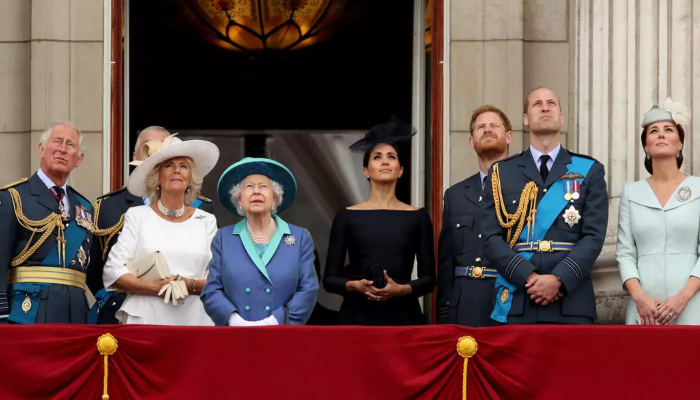
The COVID-19 pandemic has brought life to a standstill for most of the world's population, with all schedules and major events falling prey to the virus.
And the British royal family too has unquestionably been bearing the brunt of the crisis and reports had earlier emerged about Queen Elizabeth II possibly never returning in to the public life again.
A writer and royal expert Victoria Murphey who has been connected to the royals since 2011 during several historical moments, came forth weighing in the situation that is likely to roll out following the pandemic.
Murphy, who writes for Town & Country detailed how the monarchy has been the center of many events that determined the connection of the public with the royals.
Subsequently it “feels somewhat strange to be writing about the British royals at a time when we have no idea when we will next see them surrounded by a crowd,” she said.
“The royal calendar has been ripped up and family members are now most often seen on video calls. Where once they shook hands and made speeches to packed rooms, now they sit alone looking into laptops,” Murphey went on to say.
She further said that despite the pandemic rocking other organizations and institutions all around the world and forcing them to make necessary alterations, the monarchy’s way of dealing with it was fairly “unique.”
“It is somewhat unique in being a publicly-funded institution whose working members’ key duties involve meeting people,” she explained.
“Whether it's to draw attention to the work being done by charities or communities, or to enhance diplomatic relations at the request of the British Government, a huge part of their jobs have, for decades, meant getting out and about,” she continued.
“One of the Queen’s most famous quotes is ‘I have to be seen to be believed,’ and it’s unlikely that she meant via Zoom,” she added.
“The Countess of Wessex-whose work T&C profiled last month—regularly volunteers to help those on the front lines. There continues to be an abundance of videos, images, and messages released of the family supporting charities, NHS workers, and government initiatives.”
“And there is barely a Nightingale hospital in the UK that hasn’t been virtually opened by a royal. Family members have also been inventive in engaging with the challenges corona-virus has presented,” Murphay said.
She went on to explain how several insightful projects have emerged for the public through the help of senior royal family members including Duchess of Cornwall, Camilla and Duchess of Cambridge, Kate Middleton.
“The Duchess of Cornwall released her lock down reading list, the Duchess of Cambridge launched the Hold Still photography project to capture a snapshot of Britain during the pandemic, and the Queen and several other royals supported the virtual Chelsea Flower Show, sharing images and descriptions of their favourite plants.”
The changed situation, according to Murphey, also gave the public an inside view into the daily lives: “It is also impossible to ignore what is missing when live events are replaced with digital ones, and difficult not to wonder how this may affect the way the royals are perceived if they are unable to meet and greet in person for a significant period of time.”
“There is the obvious loss in a sense of occasion that surrounds even the most low-key of royal visits, as well as the increased challenge of creating a personal connection and gaining understanding of a situation via video conference call,” she added.
“The variety and quality of images that go down so well with royal fans has also significantly decreased.”
“The current set-up necessitates that most material be released by royal media teams, which means we don't get any of the details usually captured by reporters, photographers, or even the public on their camera phones. Some of the most engaging parts of royal appearances are the spontaneous or unexpected interactions,” Murphey said.












0 Comments:
Post a Comment